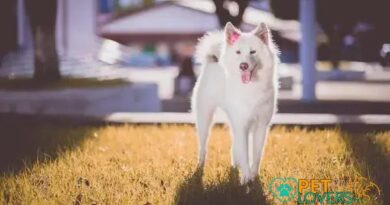What is Kneecap luxation
What is Kneecap Luxation?
Kneecap luxation, also known as patellar luxation, is a condition that affects the knee joint in dogs, where the kneecap (patella) dislocates from its normal position. This condition can occur in one or both knees and is more prevalent in certain dog breeds, particularly smaller ones. Understanding the mechanics of this condition is crucial for pet owners who want to ensure the health and well-being of their furry companions.
Causes of Kneecap Luxation
The primary causes of kneecap luxation in dogs can be attributed to genetic factors, trauma, or developmental issues. In many cases, it is an inherited condition, especially in breeds like Chihuahuas, Pomeranians, and Yorkshire Terriers. Additionally, injuries from accidents or falls can lead to dislocation, while improper bone development during growth can also contribute to this issue.
Symptoms of Kneecap Luxation
Dogs suffering from kneecap luxation may exhibit various symptoms, including limping, difficulty in walking, or sudden changes in their gait. You might notice your dog frequently lifting its leg or skipping while running. In some cases, the kneecap may visibly pop in and out of place, causing your pet discomfort or pain. Observing these signs early can help in seeking timely veterinary intervention.
Diagnosis of Kneecap Luxation
To diagnose kneecap luxation, veterinarians typically perform a physical examination and may recommend X-rays to assess the knee joint’s structure. The vet will check for any signs of instability in the kneecap and evaluate the overall health of the joint. Accurate diagnosis is essential for determining the appropriate treatment plan for your dog.
Treatment Options for Kneecap Luxation
Treatment for kneecap luxation varies depending on the severity of the condition. In mild cases, conservative management, including weight management and physical therapy, may be sufficient. However, more severe cases often require surgical intervention to realign the kneecap and stabilize the joint. Your veterinarian will guide you in choosing the best treatment option for your dog’s specific needs.
Post-Surgery Care
If surgery is performed, post-operative care is crucial for a successful recovery. This may include restricted activity, pain management, and follow-up veterinary visits to monitor healing. It’s essential to adhere to your vet’s recommendations to ensure your dog regains full mobility and minimizes the risk of future luxations.
Preventing Kneecap Luxation
While not all cases of kneecap luxation can be prevented, certain measures can reduce the risk. Maintaining a healthy weight, providing regular exercise, and avoiding high-impact activities can help protect your dog’s joints. Additionally, selecting breeds with lower predisposition to this condition can be a proactive approach for potential dog owners.
Living with a Dog with Kneecap Luxation
If your dog has been diagnosed with kneecap luxation, it’s important to provide them with a supportive environment. Regular veterinary check-ups, a balanced diet, and appropriate exercise can help manage the condition effectively. Being attentive to your dog’s needs and changes in behavior will ensure they lead a happy and active life despite their condition.
When to Seek Veterinary Help
If you suspect your dog may have kneecap luxation, it is vital to consult a veterinarian promptly. Early diagnosis and intervention can significantly improve your dog’s quality of life and prevent further complications. Always trust your instincts as a pet owner; if something seems off, don’t hesitate to seek professional advice.



